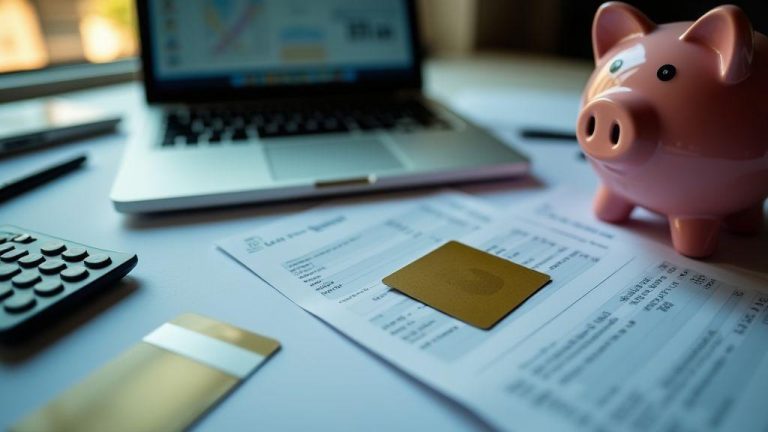When your credit is rough, you need a clear plan to keep payments on time. Start with a simple budget: list your income, fixed bills, and essential expenses. Trim one or two small items—say a streaming service or takeout—and move that cash to loan payments or savings. Pick a repayment method that fits you: snowball (small balances first) if you need wins, or avalanche (highest rate first) to save money. Write the plan down and review it each pay period.
Set automatic payments so you don’t miss due dates. Autopay lowers the chance of a late mark and often reduces your rate. Time the payment a day or two after payday to avoid overdrafts, and enable low-balance alerts in your bank app. If your income changes, revisit the schedule quickly.
A small emergency fund is central to how to plan repayment and avoid default on personal loans with poor credit using budgeting tips automatic payments and emergency fund strategies. Aim for $500–$1,000 to start, then build toward one month of expenses and later three months. Keep this fund in a separate, easy-access account so you won’t touch it for everyday bills. If a real emergency hits, call your lender before you miss a payment; many offer hardship options that limit credit damage.
Where to find loans with bad credit: credit unions, online lenders, and co-signers
Credit unions often give better terms to those with poor scores; they are member-focused and may accept written explanations for past issues. Check local credit unions and those tied to groups you belong to—work, school, or unions. Reputable online marketplaces let you compare offers and rates side by side.
A co-signer with good credit can lower your rate and increase approval odds, but they’re legally responsible if you miss payments. As an alternative, consider a secured loan using savings or a CD as collateral. Make sure the lender reports payments to the major bureaus so on-time payments rebuild your credit.
What documents improve approval odds: ID, pay stubs, bank statements, proof of address
Bring a government ID and recent pay stubs to prove identity and steady income. If self-employed, bring the last two years of tax returns and recent bank deposits. Recent bank statements let lenders see cash flow and overdraft history. Proof of address is usually a utility bill or lease. If you have a negative credit history, provide a brief written explanation (job loss, medical bills) and relevant documents—this context can change a lender’s decision.
Prequalify, compare APRs, and set up automatic payments
Prequalify with multiple lenders to see estimated rates without a hard credit hit. Compare APRs, fees, total repayment cost, and prepayment penalties. Choose the offer that costs least over time, not just the lowest monthly payment with hidden fees. Once funded, set automatic payments for the day after payday and keep a small buffer in your account.
Create a budgeting plan you can follow to pay your loan on time and prevent default
Treat your loan payment like rent—pay it first. Start by writing down every dollar you bring in and every bill that goes out. Chop expenses into must-haves and things you can cut: groceries, transport, utilities, and the loan are musts; streaming, dining out, and impulse buys are trim-able. If you cut one coffee a day and a couple of subscriptions, that money can go to loan payments or savings.
Make the plan realistic and revisit it each month. Mark a day each month to check your numbers. If you miss a target, change one habit rather than toss the whole plan. Small steady moves win.
Budgeting tips for loan repayment: track income, list expenses, and set a monthly payment target
Track income every payday with an app, notebook, or spreadsheet. List fixed bills first: rent, utilities, insurance, phone, and your loan; then list variable costs like gas and groceries. Set a clear monthly payment target that beats the minimum when possible—if the minimum is $150, aim for $180–$200 to shave interest and finish sooner. Add a 10% buffer if you can so one unexpected bill doesn’t push you into late payment territory.
Use affordable repayment options for bad credit: longer terms and co-signer options
Longer terms lower monthly cost but usually increase total interest. Do the math: lower monthly payment today versus total cost over the loan’s life. A co-signer can get you a better rate, but it’s a shared promise—discuss risks openly. Check credit unions, peer-to-peer lenders, and community banks for friendlier rates. Avoid high-fee lenders that trap you in more debt.
Set up automatic payments to prevent missed payments and late fees
Auto-pay from checking or payroll reduces the risk of forgetting and may earn a rate discount. Time payments a day after payday and monitor your account so auto-pay doesn’t cause an overdraft. Keep alerts on and a backup funding plan.
Build your emergency savings and learn precautions to avoid predatory lenders
An emergency fund is your safety net. Saving three months of basic expenses gives breathing room and keeps you from resorting to payday loans or high-rate cash advances. Start small—save $5–$20 per week or set an auto-transfer on payday. Use a separate account so the money feels off-limits.
Showing a cushion when you apply for a personal loan signals to lenders that you can handle payments and may help you negotiate longer terms or lower rates. A fund limits risky borrowing and makes safer loans possible.
Emergency fund strategies for borrowers: save small amounts weekly to build three months of expenses
Use auto-transfer or round-up apps to build habit. Figure three months of essentials (rent, food, utilities, minimum debt payments), multiply monthly essentials by three, and set that as your target. If you can’t reach it quickly, use mini-targets: 30 days, 60 days, then 90. Progress protects your payments and helps avoid default.
How to avoid default by spotting scams, hidden fees, and variable-rate traps before you borrow
Watch for guaranteed approval, up-front fees, or demands to pay via wire, gift card, or crypto—legit lenders don’t ask for those. Check state licensing, read reviews, and call your state consumer protection office if unsure. Read the fine print for APR, late fees, changes to the rate, prepayment penalties, and balloon payments. Ask for an amortization schedule to see total cost; hidden traps accelerate default risk.
Combine emergency savings and automatic payments to protect your repayment plan
Set automatic payments for at least the minimum amount and keep a small cushion in your emergency fund to cover hiccups. If a paycheck runs late, the cushion covers the auto-debit and keeps your account in good standing. Use alerts and a backup funding source so your plan won’t fail when life interferes.
Frequently asked questions
- How to plan repayment and avoid default on personal loans with poor credit using budgeting tips automatic payments and emergency fund strategies?
- Start small and act now. Make a simple budget, track income and bills, cut one expense today, set automatic payments, save a $500 starter emergency fund, and pay extra toward the highest-interest loan. Call your lender early if you slip.
- How do automatic payments stop you from defaulting?
- They reduce missed payments, late fees, and credit hits. Time them right after payday and check balances weekly. Adjust if cash flow changes.
- How can budgeting tips free up cash fast for loan payments?
- List must-pay items first, cancel a subscription, cook at home, pause new purchases, and put every saved dollar to your loan for a month to see quicker progress.
- How big should your emergency fund be to protect your loan plan?
- Start with $500–$1,000, then grow to one month of expenses and eventually three months. Even a small fund prevents skipped payments.
- What should you do if budgeting and automatic payments aren’t enough?
- Call your lender now to request hardship relief or a lower payment. Talk to a nonprofit credit counselor. Consider consolidation only if it lowers total cost. Don’t ignore calls or bills.



